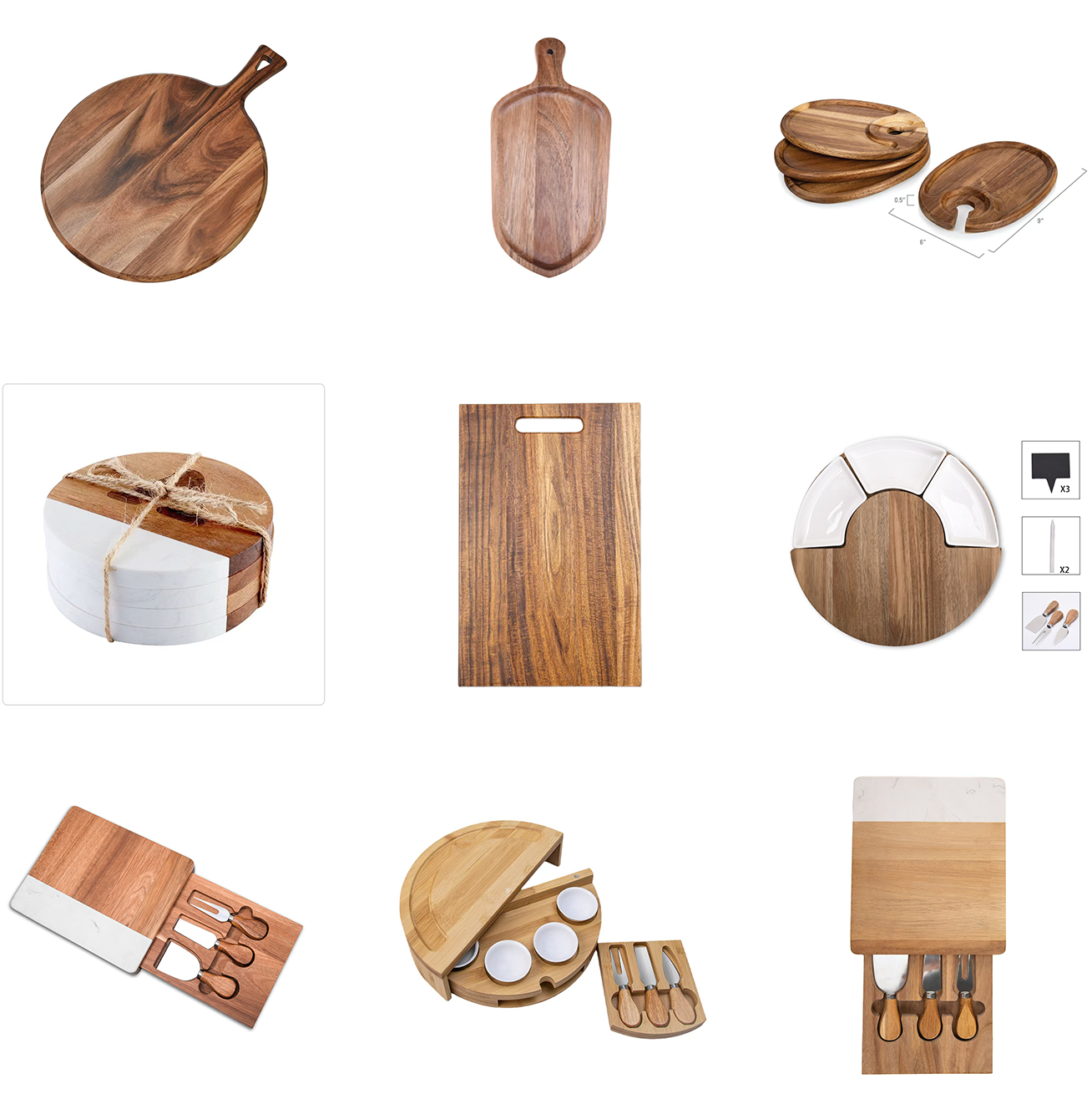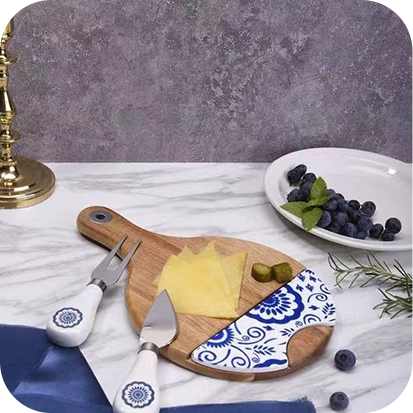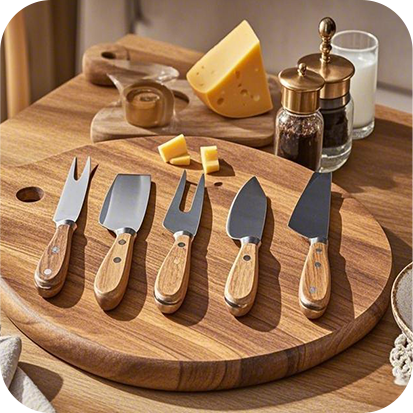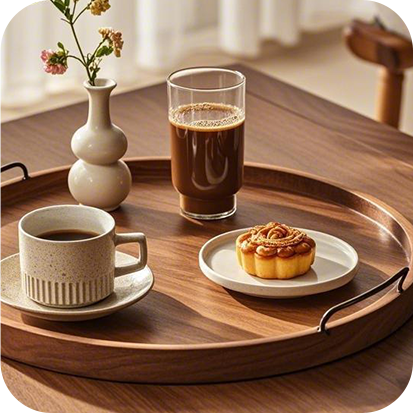How to Smooth Splinters on Personalized and Printed Acacia Serving Boards
When your acacia wood serving board begins to splinter, it can affect both usability and food safety. Fortunately, whether you're using a Non-reactive Personalized Acacia wood Serving board or a Taste-neutral custom print Acacia wood Serving board, restoring a smooth, safe surface is quick and easy with the right steps.
1. Inspect the Surface Carefully
Start by running your hand gently along the grain to find splintered zones. Splinters most commonly appear at the edges or in heavily used areas of the board. For customized surfaces like the Non-reactive Personalized Acacia wood Serving board, take special care not to damage print or engraving.
2. Sand Only the Affected Zones
Use 220-grit sandpaper or a sanding sponge to lightly smooth the splintered area. Avoid sanding the entire surface unless necessary, especially on printed boards such as the Taste-neutral custom print Acacia wood Serving board. Always follow the direction of the grain to maintain the wood's integrity.
3. Clean Thoroughly
After sanding, wipe away all dust with a slightly damp microfiber cloth. Cleaning the board well is essential before applying oil or any conditioning product, especially for boards used to serve cheeses, meats, or appetizers.
4. Oil for Restoration and Protection
Apply a generous coat of food-safe mineral oil to restore the board’s moisture and prevent new splinters. Let the oil sit for 6–12 hours, then wipe off the excess. Boards like the Non-reactive Personalized Acacia wood Serving board benefit from regular oiling to maintain food-safe properties and avoid drying.
5. Maintain Monthly
Proper care helps maintain surface integrity and taste neutrality on decorative boards used for entertaining.
SEO Tags: splinter fix custom board, non-reactive wood board, personalized acacia care, printed board sanding, oiling engraved tray, taste-neutral wood maintenance, safe board restoration, acacia serving board tips, protect printed kitchenware, smooth wood food surface



















